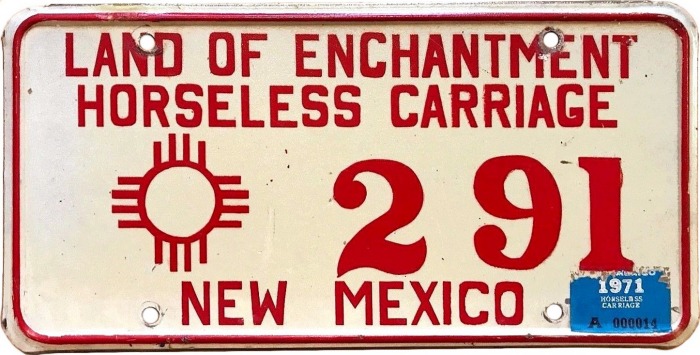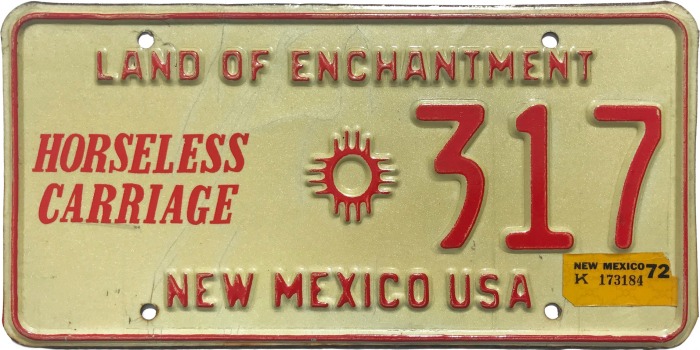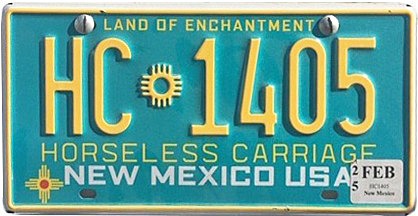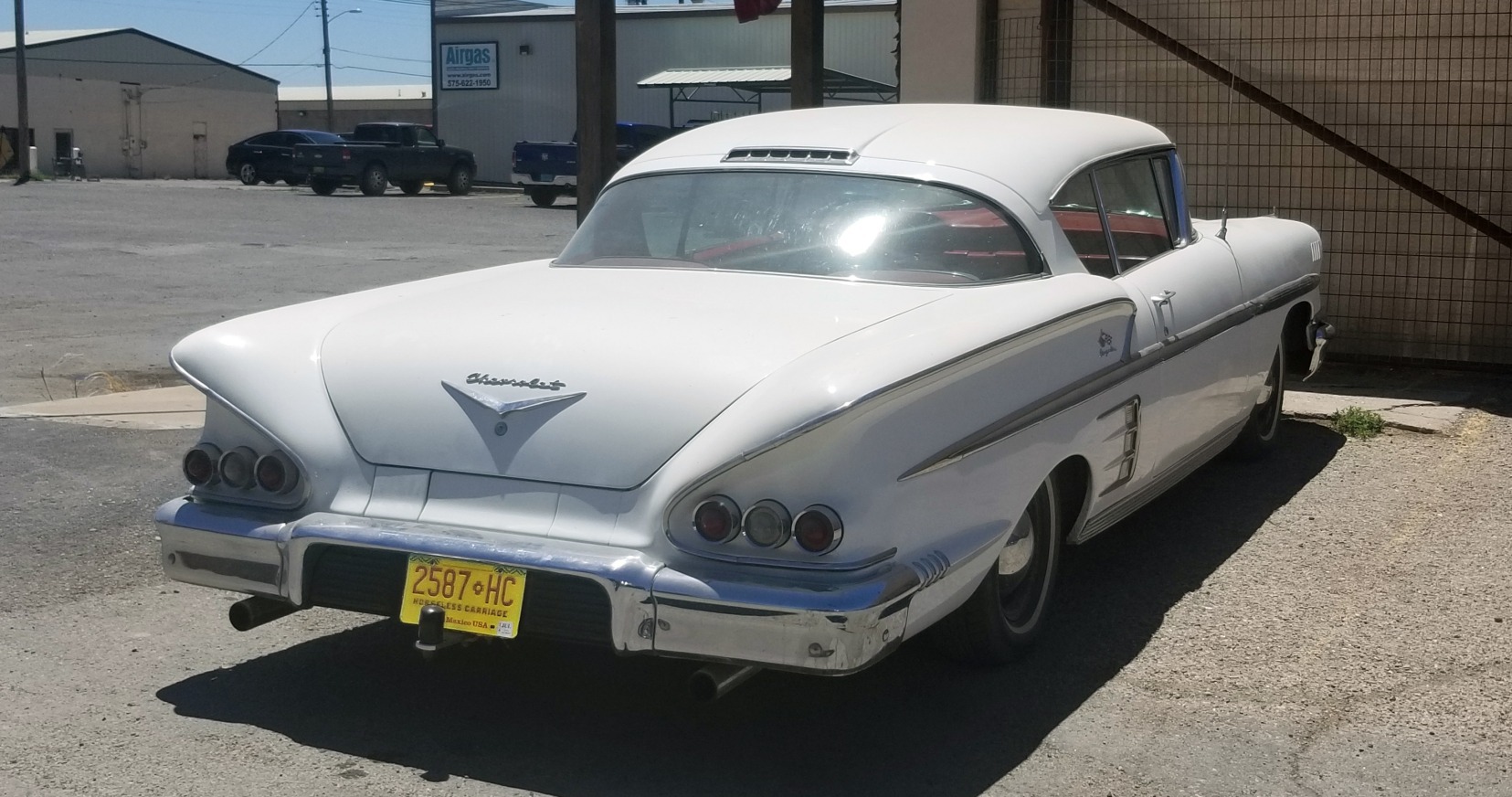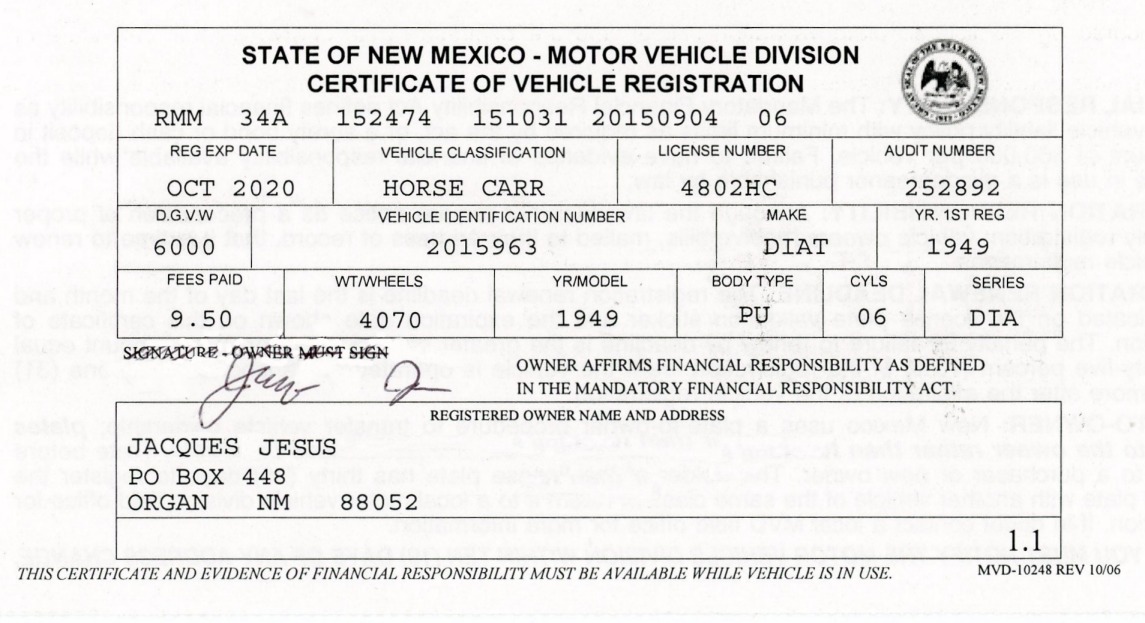| Horseless Carriage plates were first made
available in 1963 and were for cars at least 35 years old. The enabling
law specifically stated that the plates were to be undated and were to
be good for five years. Initially, antique trucks were not eligible for
the plate, but are now permitted. At the time Horseless Carriage plates
were introduced in 1963 the 35 year age stipulation made perfect sense
for this classification, as a vehicle would have been a 1928 model or
earlier to qualify. Oddly, the requirement has never been updated, which
means that today you can get a Horseless Carriage plate for a 1985
muscle car. When first introduced in 1963, Horseless Carriage
plates were issued as undated plates that were good for five years. Over
time there have been modifications in requirements, and at the present
time they are issued as 5-year plates, but dated with stickers. As a
result of the changing requirements over the decades, and the fact that
these vehicles are often held by a single owner for many years,
Horseless Carriage plates of all vintages are found both with and
without stickers. |
